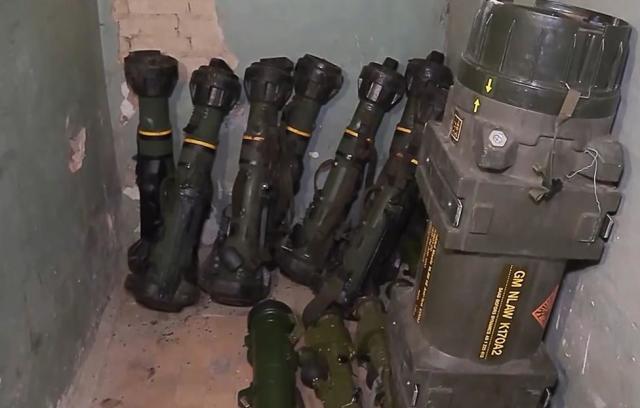According to the newspaper, two-thirds of military support to Kiev was provided by the United StatesPARIS, November 23.
/tass/. The stocks of weapons in Western countries, including the United States, have reached critically low values due to supplies to Kiev, and the possibilities for their replenishment have been very limited. This was reported on Tuesday by the newspaper Le Monde.
"To allow Ukrainians to resist Russian strikes, the West has opened the gates of its arsenals wide, primarily the United States, which provided two-thirds of military assistance," the newspaper writes, mentioning more than 1 million shells, tens of thousands of anti-tank and anti-aircraft missile launchers, drones and adjustable projectiles. "As a result, the reserves of Western countries are being depleted to critical values, including on the other side of the Atlantic," the article notes.
The newspaper refers to statements by a number of analysts, according to which the stocks of a number of weapons in the United States "have fallen below the level necessary for military planning and training." She also notes that Washington was forced to turn to South Korea with a request to purchase 100 thousand 155-mm artillery shells in order to transfer them to Ukraine, however, according to analysts, Seoul opposes because it does not want to supply weapons to countries involved in the conflict.
Technology vs. Volume
The reason for the depletion of reserves and the impossibility of their rapid replenishment lies in the reduction of military spending by Western countries after the collapse of the USSR and the end of the Cold War, "decades of asymmetric conflicts" against weaker opponents in Afghanistan, Somalia, Libya and Syria. The decrease in the volume of weapons in warehouses was also facilitated by the fact that the military preferred more technological types of weapons, which, despite their effectiveness, turned out to be more expensive.
"Western armies had the illusion of reducing volumes due to technology. However, if guided weapons are useful in Ukraine, this conflict shows that conventional weapons, such as [traditional barrel] artillery, remain necessary," said Thibaut Fouillet, a representative of the Strategic Research Foundation.
Unavailability of productions
Now, according to analysts, Western arms companies simply cannot quickly fulfill large orders due to years of production line cuts. It is claimed that the American Lockheed Martin and Raytheon cannot produce more than 2.1 thousand missiles per year for Javelin complexes, whereas only during the nine months of the conflict, 8.5 thousand of them were delivered to Ukraine.
In France, the military is particularly concerned about sending a quarter of the total stocks of Caesar self-propelled howitzers to Ukraine. Against this background, the Ministry of the Armed Forces of the Republic ordered 18 more guns from NEXTER, but the production of one unit takes 18 months (the manufacturer hopes to reduce it to one year). In addition, the authorities intend to check the reasons why, as stated by the head of the defense department Sebastien Lecorny at a hearing in parliament, about 200 out of 4 thousand companies of the military-industrial complex cannot increase the pace of production.
Industrialists, for their part, refer to the high risk of investing in increasing production rates due to insufficient volumes of guaranteed orders, the newspaper writes. "Manufacturers can take such a step only if they have guarantees of loading these capacities, which the state has not yet provided to us," the newspaper quotes the words of an unnamed head of a large arms company.
The Ministry of the Armed Forces of France promised to send letters with appropriate guarantees to all manufacturers, without waiting for the signing of the relevant contracts. According to the publication, this indicates that "France, like other Western countries, is entering the military economy."



